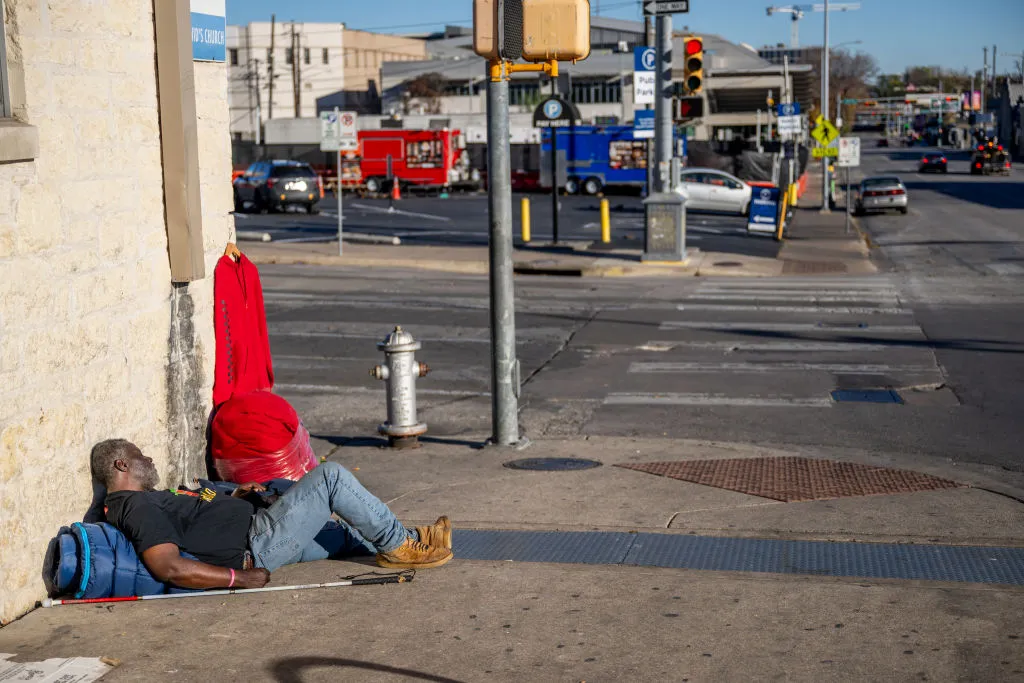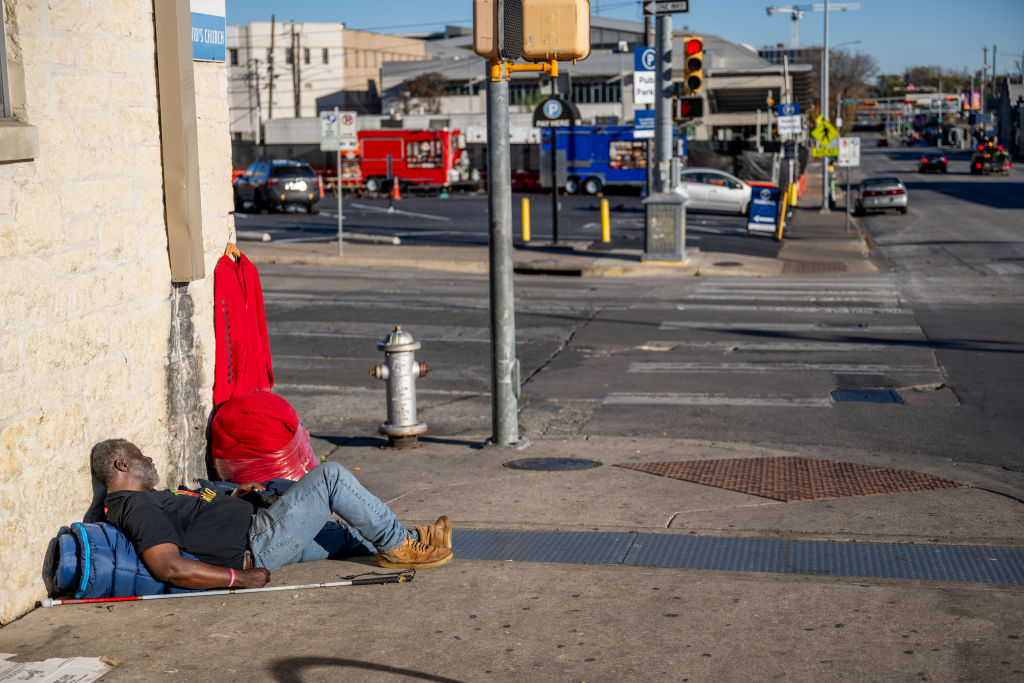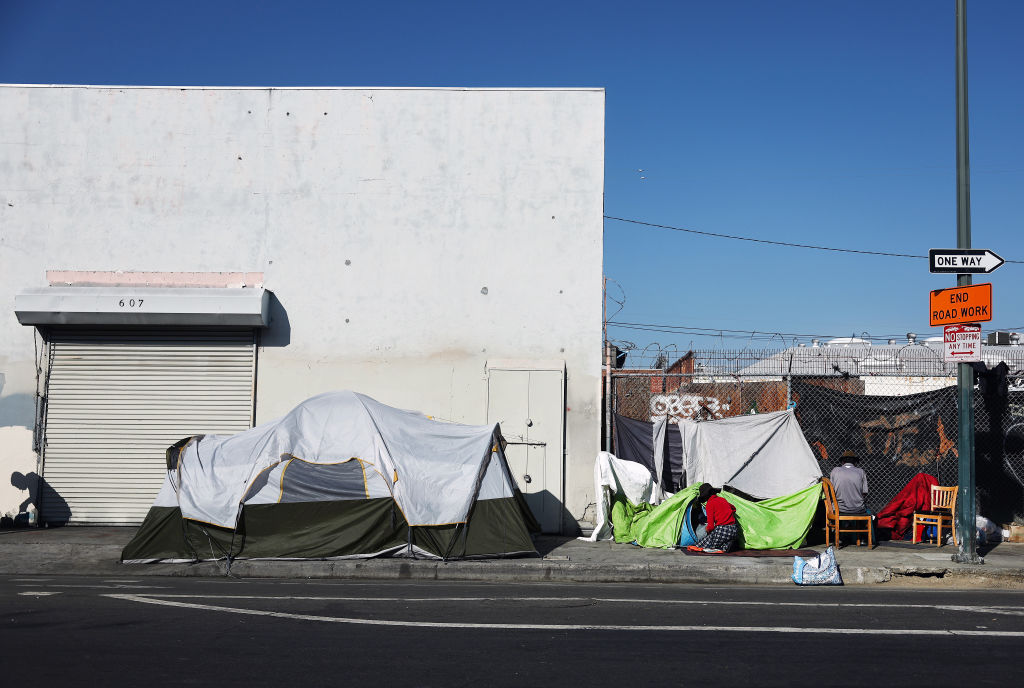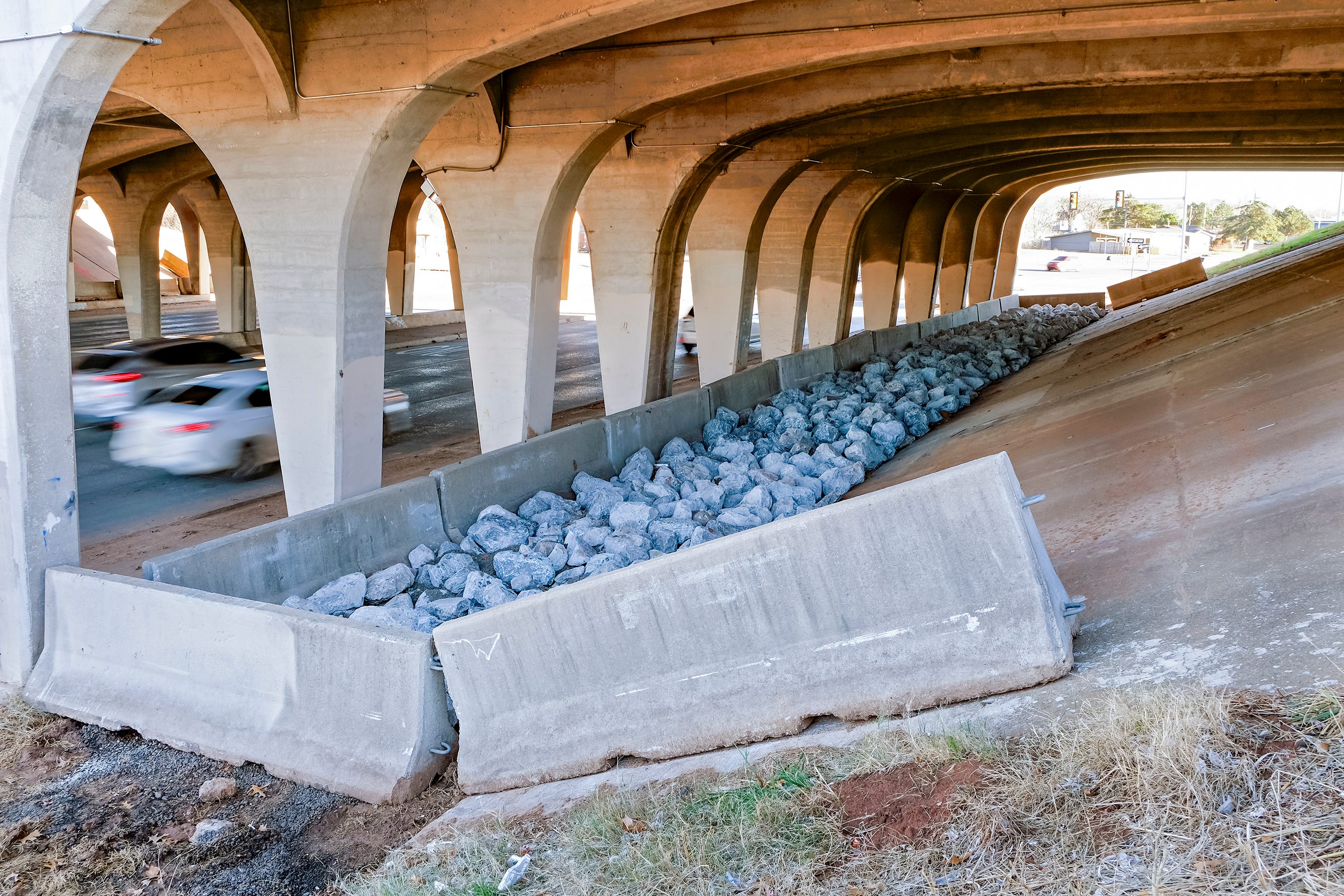Jail time, fines become solutions as states make actions practiced by people who are homeless a crime
Laws mandating arrests or financial penalties for camping outdoors or standing on a roadway criminalize poverty, advocates say, and that […] The post Jail time, fines become solutions as states make actions practiced by people who are homeless a crime appeared first on TheGrio.

Laws mandating arrests or financial penalties for camping outdoors or standing on a roadway criminalize poverty, advocates say, and that disproportionately affects Black people, who are 40% of the homeless population in the US.
In Tennessee, camping under an interstate can be as criminal as being a statutory rapist. Or stealing a gun. Or promoting prostitution. So if people who are broke, freezing and hungry take shelter under a tarp beneath an interstate ramp, police can arrest them, and prosecutors can charge them. If convicted, they’d face a minimum of one year in prison for that class E felony and a maximum fine of $3,000. That’s the same sentence a rapist or a pimp could get.
The enmity toward and criminalization of people without shelter is no better in Florida, Washington, New York or Georgia. States are setting up people without a place to live to become criminals and, in some cases, lose their right to vote.
Black people make up 40% of the homeless community in America, despite being just 13% of the country’s population, according to the National Alliance to End Homelessness. Consequently, the punitive effects of being homeless, disproportionately fall on their shoulders.
This is the state of the homeless crisis in America. Many cities and lawmakers are focused on criminalizing rather than helping the most vulnerable people in American cities. And that approach places more pressure on advocates and volunteers who want to help those who have nowhere to sleep, feel safe or take care of basic necessities.

Jeff Stills, a New York electrician, sees lawmakers shifting attitudes about people who are unsheltered, and he’s aware of the pressure to help humans facing indignity after indignity. He’s one of the thousands of volunteers and outreach workers in New York City who participate in the yearly Homeless Outreach Population Estimate (HOPE) survey.
The count is a federal requirement from the Department of Housing and Development (HUD) to determine where resources are needed to help unhoused people. That tally must be completed any time during the last 10 days of January.
For the last five years, Stills, a Brooklyn native who volunteers at soup kitchens throughout the year, has helped in the counting efforts.
“I spent a lot of my childhood homeless. This is a way for me to help us understand how serious this problem is in our city and neighborhoods.” He said his mother struggled to provide for him and his siblings, and he bounced around several shelters before moving in with his grandparents.
Stills and the others traversed New York City to conduct the survey on Jan. 23, a rainy and cold night. He worked in the Crown Heights neighborhood and found several unhoused people in some of the parks and commercial areas.
One woman lying on a park bench told Stills she tried to spend the night at a nearby motel, but it was full. She was already on a waiting list for a local shelter. Stills used an app to tally the number of people he found, which was about 7. The city’s final tally will be released in the summer.
According to Stills, the perspective around the homeless community has felt different, with the influx of migrants in the city and a perception of more targeting by the police. He’s more concerned than usual about people left on the streets. “The mindset [from lawmakers] seems to be more hostile towards the [homeless population],” Stills said. “I don’t know when that changed.”
That’s a perspective some experiencing homelessness share. Freddie Hart, who’s now at a shelter in Brooklyn, has been living on the streets for several months after relatives kicked him out of his grandmother’s house. “The police don’t even ask you questions or ask if they can help; they’ll just lock you up if you’re in the wrong spot,” Hart said.
New York City has a Homeless Bill of Rights that allows people to sleep outside, but the state is one of 16 that restricts loitering, loafing and vagrancy and one of 24 that has those restrictions in public places.
One Black woman, 34, (who requested anonymity), said she and her elementary school-aged son lost their Brooklyn apartment due to a fire and have been in a shelter for a few months. She said she’s in between jobs and had no renter’s insurance for her apartment The landlord offered no housing help, she said
She’s heard horror stories about people who are homeless getting arrested when they have nowhere to go. “I’m doing everything I can to find a home for me and my son,” she said. “We shouldn’t be in jail for our situation.”
More people are finding themselves in the same situation as that mother. According to HUD, from January 2022 to January 2023, there’s been a 12% increase in the number of homeless people. There are overall 650,000 homeless people in the country, which is the highest number since 2007. The number increased by 70,000 from 2022 to 2023.
“We have seen some growth in the numbers, unprecedented growth as a matter of fact,” said Donald Whitehead, the executive director of the National Coalition for the Homeless. “We’ve seen growth in people entering homelessness for the first time. We’ve also seen a pretty substantial growth in seniors and a continued, overrepresentation of people of color.”

Half of U.S. renters pay 30% or more of their income toward rent and utilities. According to a recent Harvard University study, that’s considered unaffordable. Advocates say that a drastic rise in rent prices throughout the country along with an end to much of the COVID-19 assistance contribute to the rising number of people who are unhoused. Still, experts believe the racial angle makes the problem persistent.
“Racism is both a cause of homelessness, and it is the reason that we perpetuate homelessness in the country,” Barbara DiPietro, the senior director of policy at the National Health Care for the Homeless Council said. Part of that has to do with income levels. According to BlackRock, an American investment company, 37% of Americans don’t have $400 in liquid savings. For Black households, that number is 72%.
The criminalization of homelessness and the draconian punishment for being unable to afford shelter look different in each state but they have the same effect: to get poor (mainly Black) people out of sight without addressing the systemic causes. In 2022, Tennessee made it a felony for someone to camp on public grounds. Those charged could face six years in jail, a $3,000 fine, and the loss of their right to vote.
Earlier this year, the Kentucky House passed the Safer Kentucky Act, a sweeping anti-crime bill that includes banning street camping in the state. A person could be fined up to $250 for camping illegally under the law. It also states that property owners can use force to remove someone who is camped on private property. The bill is stalled in the state Senate.
In Washington state and Atlanta, officials with the state Departments of Transportation use large rocks to stop people who are homeless from gathering in certain areas. In Miami Beach, Florida, there is a ban on people sleeping outdoors, and the police can arrest those on the streets who refuse to go to a shelter or who are offered a bed and refuse it. Those arrested could get 60 days in prison and a $500 fine if convicted.

Overall 48 states have laws that restrict the regular behavior of people who are homeless. That includes panhandling and sleeping outside.
These tactics — according to experts and advocates — perpetuate the cycle and make it harder for advocacy groups to help unhoused people. “It exacerbates their outreach cause in ways that are absolutely unfathomable,” Whitehead said. “When people are put in jail it makes them ineligible for certain programs. If they have medicine, it can get thrown away. It can have some deadly consequences.”
The criminalization trend from lawmakers and city leaders has become so prevalent that the Supreme Court is deciding whether or not some anti-homelessness laws in place constitute cruel and unusual punishment, exploring a case out of Grants Pass, Oregon.
A federal court in the state said that the city could not enforce a law against people without shelter for sleeping outside or in a car when they have nowhere else to go. That decision came after two people who are unhoused challenged the law.
Aside from the Supreme Court case, there are pushes in various states to provide more resources for those experiencing homelessness. Milwaukee has had no families living on the streets since 2020. Between 2021 and 2022, the number of families living in shelters decreased by 72%.
These numbers result from coordination across various agencies and organizations with shelters, rehousing providers and eviction lawyers. This includes a fund of $9 million for a landlord-tenant mediation program that can be used to help families struggling with rent, utilities, car repairs and more.
Last year, Houston cut its homeless population by 17% compared with 2022. Over the past decade or so, the population has decreased by over 60%. City and county agencies along with nonprofits have worked together to address and invest in the systemic issues that drive homelessness, like a lack of affordable housing. The priority for them is housing, not over-criminalizing.
Experts believe other cities and regions can learn from the work in places like Milwaukee and Houston. “There are tens of thousands of abandoned buildings in every community,” Whitehead said. “We could easily transform some of those units into affordable housing and it’d be less costly and quicker than trying to build something from the ground up.”
Stills would love to see that in his neighborhood. He hopes that as he continues to participate in the homeless survey every year, the numbers will eventually decrease not because more homeless people are in jail but because they received help.
“We need more compassion for people,” Stills said. “A homeless person is still a person.”
Never miss a beat: Get our daily stories straight to your inbox with theGrio’s newsletter.
The post Jail time, fines become solutions as states make actions practiced by people who are homeless a crime appeared first on TheGrio.












